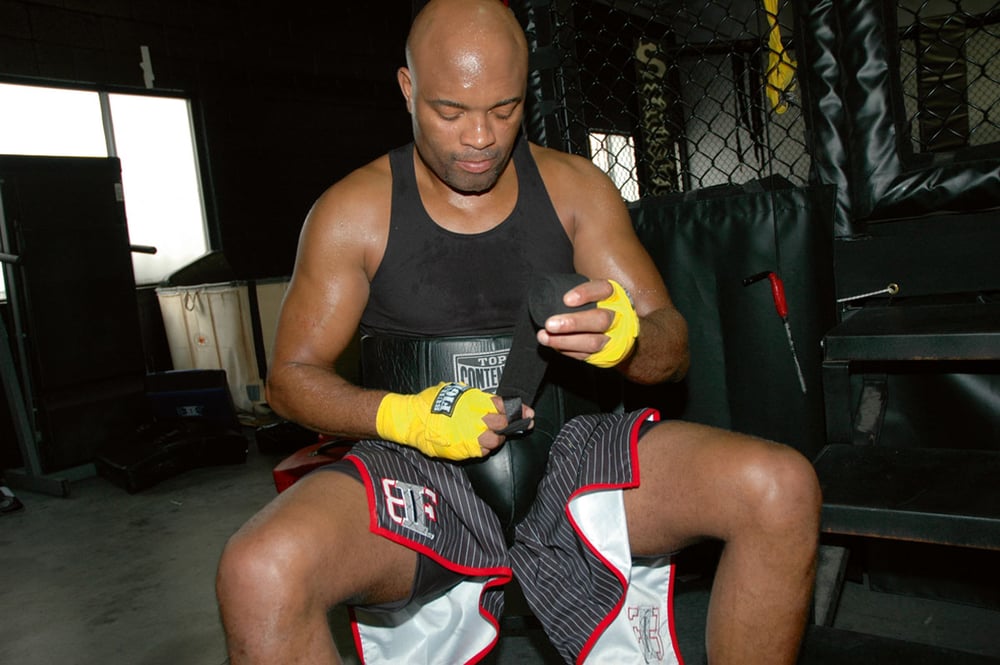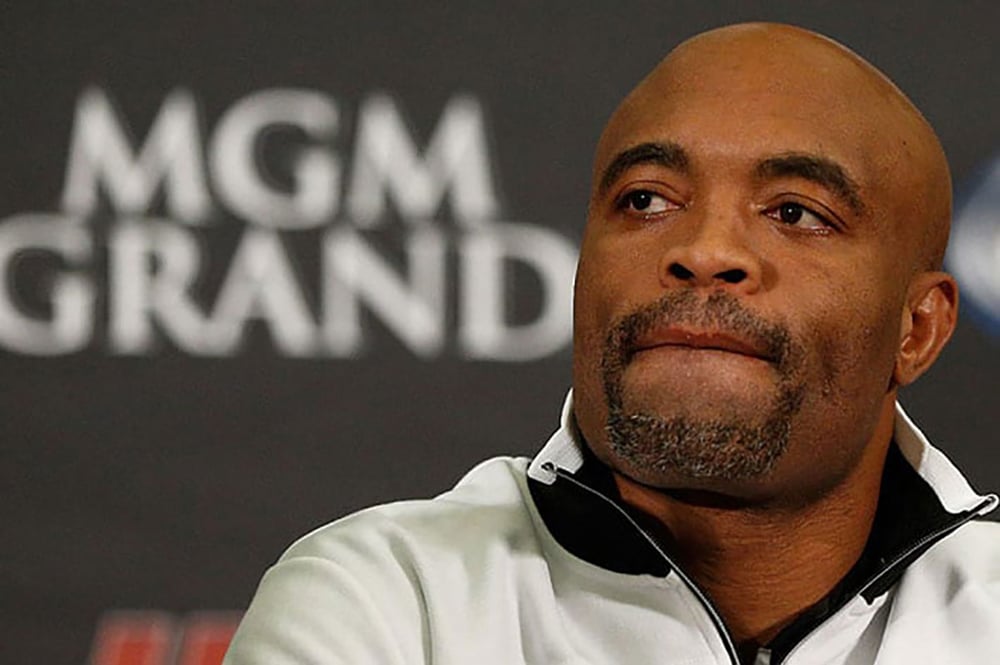
Issue 205
May 2024
Ray Klerck explores the resilience of MMA fighters who overcome severe injuries, highlighting their physical and psychological battles to make triumphant comebacks in the sport.
When life gives you lemons, some fighters make lemonade. Others kick the lemons into next week and get back to work. In MMA, injuries are more of a when than an if. As if the training, nutrition, and face punches aren’t enough, there are the injuries and deep psychological scars that are left behind. These wounds can’t be fixed with a pep talk and duct tape. Instead, they leave the mightiest fighters grappling with the daunting task of reinstalling their winning operating software.
Rehabilitating from a physical injury is a straightforward, albeit challenging, process that involves a routine. However, psychological recovery—rehabilitating the mind—is often a more complex and less understood part of the journey, particularly for fighters accustomed to high levels of performance and physical prowess.
Yet, there's a resilient breed of fighters who not only return to the Octagon but do so with a vengeance, turning setbacks into setups for remarkable triumphs. What follows is a deep dive into the psychological odyssey of how the darkest moments of fighter’s careers fueled their most luminous comebacks.
THE MENTAL ARENA
In MMA, injuries aren't just part of the game; they are the game. Fighters must make peace with the paradox that to win, you must first be willing to get hurt. The mental battle after the physical recovery from an injury is often more daunting than the physical obstacles. According to a 2024 study published in the South African Journal of Sports Medicine, injuries challenge an athlete's physical capabilities and instill negative thoughts and feelings, significantly impacting their psychological readiness to return to sport. Injuries don’t just put fighters on crutches; they put their confidence in a cast. This research found that a substantial portion of athletes were not psychologically ready to resume their sports, highlighting the prevalence of fear avoidance behavior among those still grappling with their recovery.
The fear of re-injury lurks in the shadows, often causing fighters to hesitate during training or matches as they subconsciously shield their once-wounded parts. This cautious dance hampers performance and sets the stage for new injuries, underscoring the critical need for mental toughness training. Beyond the physical, an injury can deliver a knockout blow to a fighter’s identity, forcing them to grapple with existential questions like, "Who am I if not in the Octagon?" This crisis of self can spiral into deep emotional turmoil. Meanwhile, the slow crawl of physical recovery can frustrate even the most disciplined athletes, tempting them to jump back into the fray too soon and risk further harm. And as the post-training buzz fades into silence, the isolation can weigh heavily, turning recovery into a solo bout with loneliness and disconnect from the camaraderie that fuels their fighting spirit. In this arena, every setback in physical healing tests not just the body but the resilience of the soul.
NEVER THE SAME
It doesn’t matter how great the fighter is; an injury can drastically change their career trajectory, impacting their performance long after their physical wounds have healed.
Anderson Silva - once considered the greatest MMA fighter ever – saw his psychology take a hit after he horrifically broke his leg against Chris Weidman in 2013.
Speaking in the press conference before his Nick Diaz fight, Silva had plenty of reflections on the leg break that saw him sidelined for over a year, and the mental side took its toll on him.

"But it's something I don't like to remember too much,” he said. “I went through the worst month of my life. It was a lot of pain the moment when I broke my leg. When I realized my leg was broken, I thought my career was over. So, a million things went through my mind.
You might think that depression is not something serious, but I was depressed. I was very upset, and if I didn't have the people that I have by my side, maybe I wouldn't come back."
Although he returned to fighting after the injury had healed, he never regained his previous dominance and lost 6 of his next 7 UFC fights.
While Silva stands as the most famous case, he isn’t alone. Fighters like Cain Velasquez, Tony Ferguson, Thiago Santos, and Rashad Evans couldn’t return to their former glory after a fight. They all suffered severe injuries, so it’s likely a combination of both the physical and mental adjustments that need to be made to overcome injuries that led to these dips in form.

DEALING WITH THE PAST
How a fighter can deal with a severe injury can be influenced by the life circumstances they’ve had to endure. It’s no secret that many fighters grew up in the school of hard knocks, which can compound the stress.
“The intersection of prior trauma and adversity, prior exposure to challenging neighborhood disadvantage, and poorer preinjury health and functioning should not be overlooked in the midst of acute injury care when assessing for the risk of postinjury mental health symptoms," said the lead investigator Therese S. Richmond, PhD, CRNP, FAAN who was part of a study that measured depression and PTSD risks after an injury.
The research found that up to half of all patients experience postinjury depression and posttraumatic stress disorder (PTSD) in the months after injury.
Physically, the journey back to the ring is nothing short of Herculean. However, making a comeback is as much about retraining the brain as mending bones.
A fighter's spirit is laid bare when physical prowess is stripped away by injury. This intangible quality is often the X-factor in determining who returns to the Octagon. Jamahal Hill, who suffered the recent loss in UFC 300, spoke about his ruptured Achilles tendon in the lead-up to his Pereira fight.

“Appreciate the moments, it could’ve all been over,” Hill said. “There are people, athletes who have suffered this same injury, who had to call it quits on their hopes and their dreams. I’m fortunate enough to now be in a time, and was in a position, to when the best medicine available was available to me, and I was able to take advantage of that.”
That loss marked the first knockout of his career, and it came directly after a brutal injury. So, despite the best medical care, this is a case study of how an injury can break a fighter's flow.
BUILT BACK BETTER
The UFC roster is a testament to resilience. It showcases the fighters who have not only returned from severe injuries but have also reclaimed their top form, demonstrating the profound interplay of advanced medical interventions and sheer mental fortitude. Notable among these comebacks are Georges St-Pierre (GSP) and Brock Lesnar, each of whom faced potentially career-ending challenges.
GSP returned from a debilitating ACL injury with a focus on meticulous rehabilitation and strategic training adjustments, which not only saw him regain his welterweight title but also helped him leave a lasting legacy as one of the sport's greatest. He’s never been a stranger to hurt, suffering eye and neck injuries, but even when injured, these only served to harden his resolve to get back to where he once was.
“Right now, I'm in a downfall in my life, but in a few months, I will be better and I will be champion again," St. Pierre said after announcing his injury. Instead of seeing it as a setback, he took something from the injury.
“When you get hurt for a long time, you’re forced to get pulled away from training and stop doing what you like to do every day,” he said during an interview. “It makes you see things in perspective, and I just want to get back.”
Having a goal, a determined mindset, and unwavering confidence seems to have a massive bearing on seeing injury as an opportunity to be better.
During this same era, Brock Lesnar battled a severe bout of diverticulitis that took him out of competition in 2009. This illness made him withdraw from a scheduled title defense at UFC 106. After overcoming the condition, it flared up again, leading to his temporary retirement from MMA after a loss to Alistair Overeem at UFC 141. Lesnar underwent surgery to remove a section of his colon, which had been severely affected by the disease. Lesnar came back at UFC 200, where he beat Mark Hunt and initially won the bout. However, the result was later overturned to a no-contest after Lesnar failed a drug test. His battle with diverticulitis and his return to the UFC after such a severe health scare indeed demonstrates his resilience and determination.
While he went out with a fighting spirit, we can all sympathize with his feelings about how this injury impacted his career trajectory.

“At the top of my career, I wasn't at the top of my game,” said Lesnar. “I felt like I was cheated out of my career in the UFC. In my mind and in my heart, I never lost to a foe. I never lost to an opponent. I lost to diverticulitis. That was my opponent that beat me. A lot of other people might have other thoughts about that.”
As sports psychologists suggested, engagement in mental strength training can fortify a fighter's resolve and enhance their cognitive recovery processes. Cognitive-behavioral strategies are particularly pivotal in helping fighters develop resilience and a positive re-framing of the injury experience—turning agony into a narrative of overcoming adversity.
THE COMMUNITY FACTOR
No fighter makes the walk back to the octagon alone. The role of a supportive community—trainers, therapists, family, and fans—cannot be overstated. Jon Jones still has a torn pectoral muscle and responded to a fan’s social media question about recovery.
“It’s one of the most depressing injuries I’ve ever had, pushed my upper body strength back by years. I’m not even going to get into it, going to remain positive and keep putting in the work day by day.”
Whether he can return on November 9, 2024, will be the most challenging test for even the best fighters.
In the following months, the spotlight will fall on Conor McGregor's recovery from his broken leg. This effort was as much a product of medical science as it was of the fervent support he received from his global fanbase, illustrating how external encouragement can fuel an athlete’s internal fire. Drawing from his past resilience, he’ll need to lean on his trademark confidence and the unwavering support of his fanbase to conquer this new obstacle. Whether engaging in mental strength training or redefining his comeback strategy, McGregor has all the tools to turn this setback into another legendary chapter in his career.
The stories of these fighters underscore a universal truth in sports: comebacks are never just physical. They are intricate tapestries woven from the fibers of courage, science, and indomitable will, showcased vividly in mixed martial arts. As each fighter walks back into the cage, they carry their hopes and the collective aspirations of anyone who has ever been down and refused to stay there.










